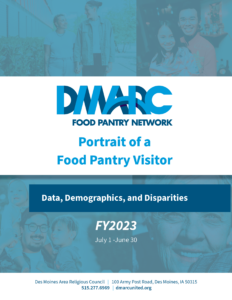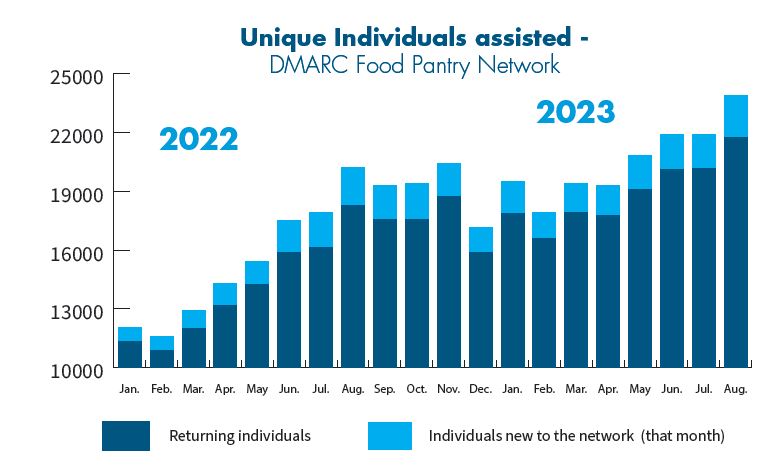We envision a community where everyone has access to the food they want and need at all times. As we look back at the past three years, there are many areas where this vision seemed more attainable than ever before. When people have access to nutritious food, it has a ripple effect on other areas of their life including education, employment, safety and wellbeing, physical and mental health, and so much more.
We can make this vision a reality when our leaders make intentional policy decisions and our community works together on solutions to remove barriers to people accessing their essential needs.
This report suggests a number of areas of opportunity for DMARC to begin addressing these disparities, including, but not limited to:
Policy Advocacy:
Increasing access to SNAP benefits and SNAP benefit amounts
Eliminating barriers to federal assistance for certain groups including advocating for the expanded child tax credit, P-EBT, and other low barrier assistance that alleviate child poverty
Increasing disability and social security benefit amounts
Requiring “minority impact statements” on proposed pieces of legislation
Partnerships and Outreach:
Promoting High School Equivalency Degree (HSED) programs for adults
Providing additional outreach about SNAP and assistance with applying, especially targeted to seniors and those who are most susceptible to disenrollment in response to state and federal changes to SNAP Referrals to job training and placement programs
Our Services:
Expanding food selections at food pantries to address the wants and needs of a diverse set of food pantry visitors
Targeting outreach to Hispanic communities to build trust and correct misconceptions
Further Research:
Conducting a deeper dive to better understand barriers people are facing that are leading to disparities, such as conducting an annual survey to ask questions that are not included in the standard intake process
Collaborating with other community groups and organizations who work with and for groups facing the largest disparities to better understand why these disparities exist and how we can work together to improve, and eventually, eliminate them





